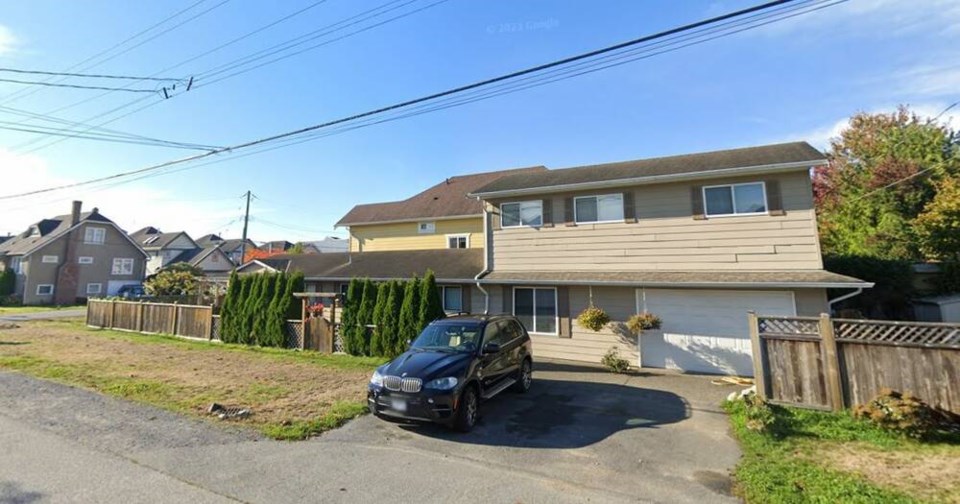A Richmond residential builder has spent almost three years fighting with the city over whether columns supporting a second-storey balcony overlooking the frontyard should count as a wall.
Chen Shun Chew, a long-time Richmond resident, submitted his application to build a house on Second Avenue in Steveston back in 2021.
The application was rejected by the Building Approvals department after the side wall, including the columns, was deemed to be longer than permitted.
Drawings provided by Chew show maximum length allowed for the wall was 66 feet — 55 per cent of the lot depth. The proposed wall would be 64 feet and six inches.
But including the columns would add five feet, 10 inches to the wall measurements, pushing it past the maximum allowed length.
The city’s response to Chew, however, was that including “structural posts” for a roof or balcony has “consistently” been considered part of the building’s perimeter.
The purpose of limiting the length, the city’s director of building approvals, James Cooper, told Chew is to reduce “building massing” and privacy impacts on neighbouring lots only four feet away.
Cooper later added one of the proposed columns is “in line with a continuous sidewall” along the side yard setback and thus contributes to the measurement of the continuous wall.
Chew disagreed.
The bylaw stipulates the maximum length of continuous walls should not be greater than 55 per cent of the lot depth, but this does not include columns, he said.
“Nowhere does the bylaw state this, or suggests this interpretation,” Chew told the Richmond News.
Frustrated by the impasse, Chew said the city’s building regulations are “black and white” and should not have room for “subjective interpretation.”
Clay Adams, City of Richmond spokesperson, said the city is aware of Chew’s concerns and has had “repeated communication” with him regarding the proposed development.
“The City frequently works with developers to ensure their proposals comply with bylaws and regulations, and any issues are usually addressed through process in a manner that works for all involved,” he added.
Chew told the News he has always had “great diplomatic relations” with the city and building approvals staff and he “never had to deal with a misinterpretation of the regulations as strange as this.”
City planning staff should ensure applications are compliant with bylaws as they are written, said Chew, who believes it is important for the system to remain impartial and objective.
“Just because you do not like the design does not mean you can make up the rules,” said Chew.



